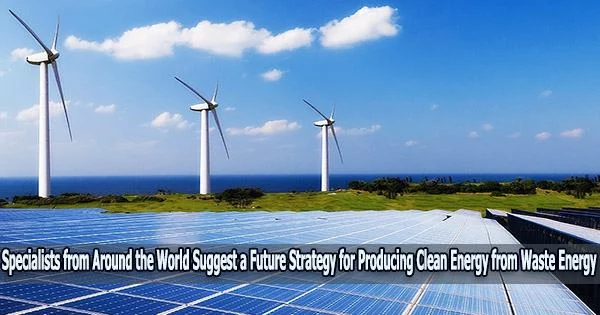Professor Vincenzo Pecunia of Simon Fraser University has led a group of more than 100 highly esteemed experts from around the world in developing a thorough “roadmap” to direct worldwide efforts to turn waste energy into clean power.
“With the rising global energy demand and the challenges posed by climate change, it is more urgent than ever to generate green energy to preserve our planet and sustain human development,” says Pecunia, from the School of Sustainable Energy Engineering, where he leads the Sustainable Optoelectronics Research Group.
“Energy harvesting materials present a promising opportunity to generate clean electricity, ultimately enhancing the energy efficiency of our daily lives and supporting our efforts to combat climate change. These materials have the ability to convert ambient energy from various sources including light, heat, radiofrequency waves (like those from Wi-Fi and mobile signals), and mechanical vibrations.”
Pecunia and 116 top specialists from across the world have published their Roadmap on Energy Harvesting Materials in the Journal of Physics: Materials in order to fulfill the full potential of energy harvesting technologies.
The roadmap combines the opinions of industry experts on different energy harvesting techniques, current developments, and problems. It also examines important performance parameters of these technologies in relation to their maximum potential for energy conversion. It provides recommendations for future research to fully realize the promise of energy-harvesting materials by building on these discoveries.
An area of tremendous potential involves using ambient energy harvesters to sustainably power the billions of sensor nodes being deployed for IoT. By providing an eco-friendly alternative to batteries (which face materials scarcity, toxicity, and waste issues), energy harvesters could sustainably power IoT sensors.
Professor Vincenzo Pecunia
“This roadmap is the result of an unprecedented endeavour, marking the first time that such a large and diverse international network of energy harvesting experts from America, Asia, Europe, and Oceania have worked together to chart a course for the advancement of these technologies towards seamless integration into everyday objects and environments,” says Pecunia, lead author.
Smart homes, smart cities, smart manufacturing, and smart healthcare are becoming a reality because to the quick development of smart systems. By the use of gadgets like smartphones, fitness trackers, and smart home assistant technologies, sensors, and systems are integrated into our daily life. All of these operate as part of a wide network, known as the Internet of Things (IoT), that is constantly communicating and exchanging data.
“An area of tremendous potential involves using ambient energy harvesters to sustainably power the billions of sensor nodes being deployed for IoT,” explains Pecunia. “By providing an eco-friendly alternative to batteries (which face materials scarcity, toxicity, and waste issues), energy harvesters could sustainably power IoT sensors.”
The research team at Pecunia has significantly advanced this field by pioneering the use of printable semiconductors to create clean electricity from indoor light and their integration with printed electronics to create eco-friendly Internet of Things sensors.
Due to their low power densities, ambient light, vibrations, and radiofrequency waves provide a challenge for energy collection.
“It’s essential to develop energy harvesting materials that can efficiently capture this energy and convert it to electricity,” he explains. “Another important priority is to develop energy harvesters that can be applied on all types of surfaces and objects, which requires energy harvesting materials that are mechanically flexible.”
The roadmap for energy harvesting technologies is a collaborative, international effort to help researchers and leaders forge a future in this field of study.
“Our hope is to catalyze research efforts in energy harvesting research across multiple disciplines to ultimately deliver clean energy anywhere, anytime.”





